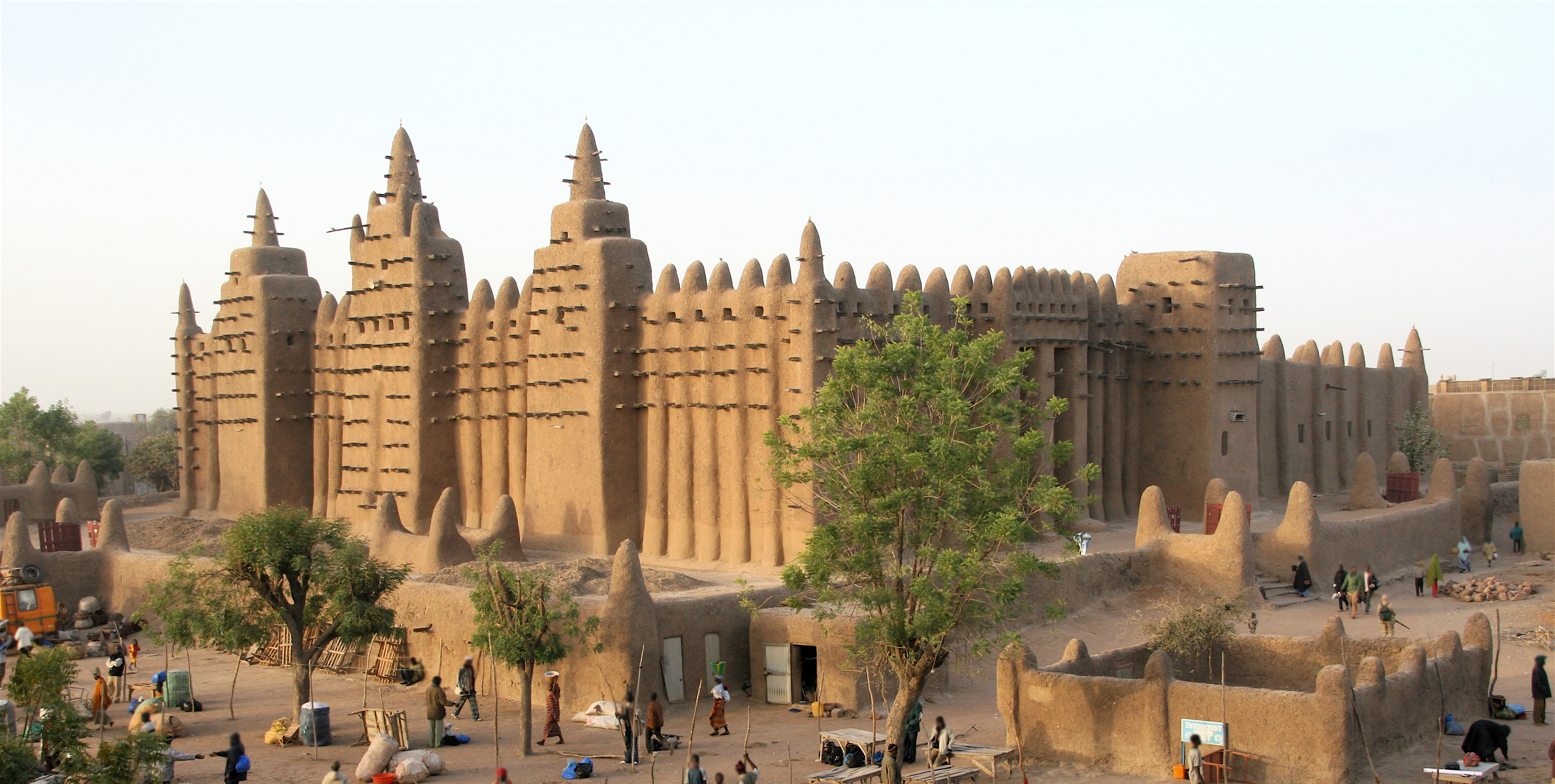
The Great Mosque of Djenné, towering majestically in the heart of Mali, stands as the largest mud-brick building in the world and a beacon of Islamic culture and architectural ingenuity. Reconstructed in 1907, this iconic structure epitomizes the grandeur of Sudano-Sahelian architecture and continues to serve as a vital center for Islamic learning and community activities.
Architectural Splendor
Built from sun-baked mud bricks, the Great Mosque of Djenné showcases the traditional building techniques of the Sahel region. Its unique style features protruding wooden beams, not only providing structural support but also serving as scaffolding for annual maintenance. The mosque’s minarets, adorned with intricately designed pinnacles, add to its striking silhouette against the Malian skyline.
Historical Significance
The current mosque, completed in 1907, stands on the site of an earlier mosque dating back to the 13th century. This earlier structure was commissioned by Koy Konboro, the first Muslim ruler of Djenné. The 1907 reconstruction, led by the French colonial administration, aimed to restore the mosque’s former glory while preserving its historical essence. Today, it remains a symbol of Mali’s rich cultural heritage and its enduring Islamic traditions.
Center of Islamic Learning
Beyond its architectural beauty, the Great Mosque of Djenné is a renowned center for Islamic education. For centuries, it has attracted students from across West Africa to study the Quran, Islamic law, and other religious sciences. The mosque’s adjacent madrasa (Islamic school) continues this tradition, fostering a vibrant scholarly community that contributes to the spiritual and educational fabric of the region.
Cultural and Social Hub
The mosque is not only a place of worship but also a focal point for community life in Djenné. Every year, the city hosts a grand festival, the Plastering of the Great Mosque, where residents come together to reapply mud to the mosque’s exterior, ensuring its preservation. This event is a testament to the community’s dedication to maintaining their cultural heritage and serves as a vibrant celebration of unity and tradition.
UNESCO World Heritage Site
Recognizing its outstanding cultural value, UNESCO designated the Great Mosque of Djenné as a World Heritage Site in 1988. This status underscores the mosque’s global significance and the importance of preserving its unique architectural and cultural legacy for future generations.
The Great Mosque of Djenné stands as a testament to the ingenuity and resilience of Sudano-Sahelian architecture. As the largest mud-brick building in the world, it continues to inspire awe and reverence, drawing visitors and scholars alike to its hallowed halls. Through its enduring presence, the mosque not only honors the past but also shapes the future of Islamic learning and cultural heritage in Mali and beyond.
